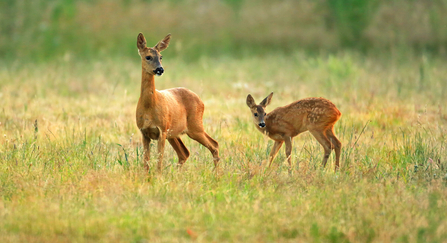Where I live, we have a stable population of Roe Deer. Everyday, I go out to photograph them, so I’ve managed to study and take note of their behaviours, both as individuals and the species as a whole.
Roe Deer are typically solitary animals but they can be seen in small family units during winter. However, during spring and summer, when food is abundant, herds of up to 15 Roe Deer have been recorded, eating in harmony with each other.
As mentioned, I go out to the local fields everyday to photograph the local deer and I’ve found that the majority of the time, they come out of the woodland and into the fields between 3:50 pm and 4:30. If I see one deer, I know that more aren’t far behind. Between these times, anywhere between one and six deer come out in the fields to feed. In the fields, we have a roebuck, some adult females and a female with two fawns.
The breeding season (known as ‘the rut’) starts around mid-July and ends in mid-August. Although mating takes place in the summertime, the females have evolved in a way that allows them to delay implantation until the following January so that the babies will be born in the spring time rather than the cold winter months, so they have a higher chance of survival.
Roe and Red Deer are the only two deer species native to the UK, but four non-native species can now also be found, which include Fallow, Chinese Water Sika, and Muntjac Deer. The Fallow Deer was introduced by the Normans as far back as the 11th century, but the Chinese Water Deer is a much more recent arrival, with individuals having escaped captivity in the 1920s and established wild breeding populations.





